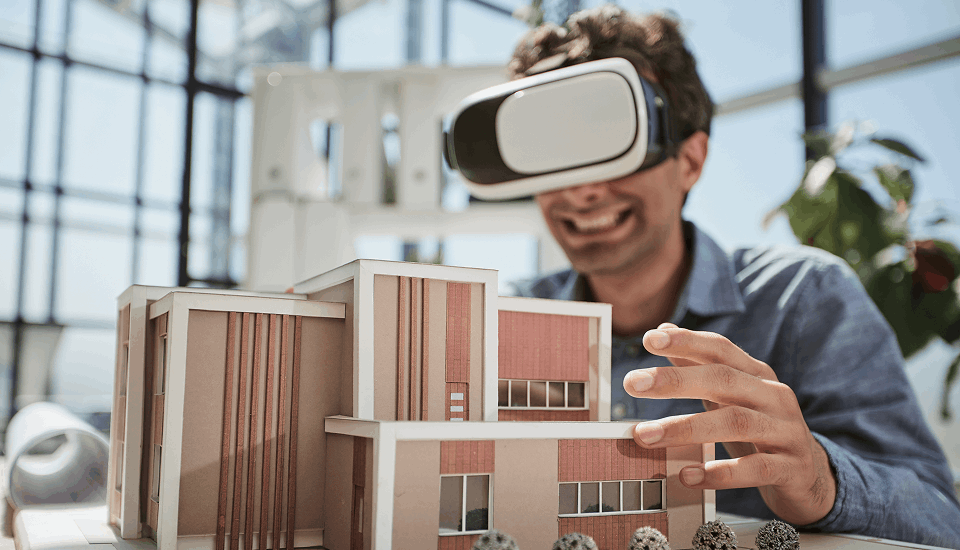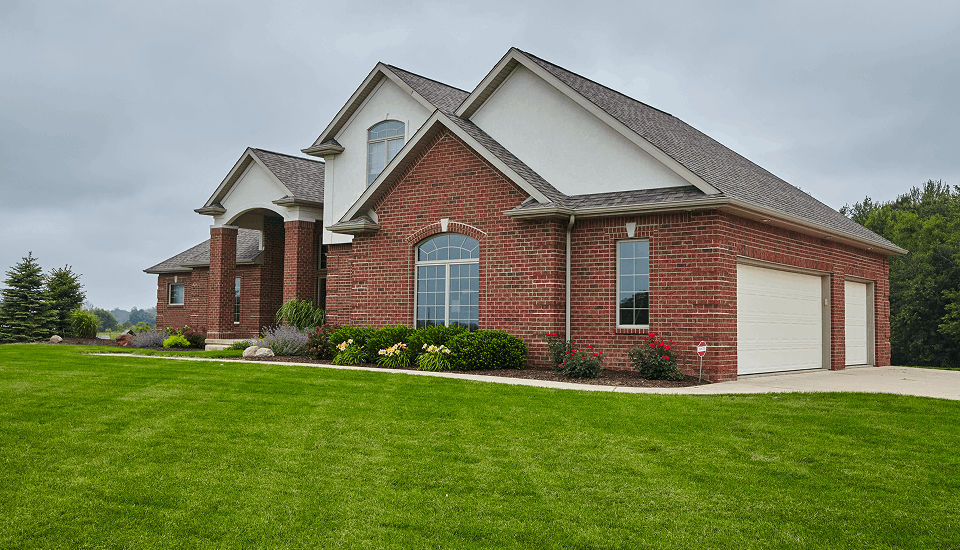The construction industry is evolving rapidly, and 3D-printed buildings are at the forefront of this transformation. As demand for faster, more affordable, and sustainable housing grows, innovative technologies like 3D printing are reshaping how homes and commercial buildings are constructed. One of the biggest enablers of this shift is construction outsourcing, which allows companies to access skilled labour, advanced technology, and cost-effective solutions from around the world.
Australia recently made history by unveiling its first multi-storey 3D-printed house, showcasing how automation and outsourcing can drive efficiency in modern construction. This project highlights the potential of 3D-printed homes to address housing shortages, reduce costs, and minimise environmental impact.
In this article, we’ll explore how 3D printing in construction works, the details of Australia’s pioneering project, and how construction outsourcing is playing a crucial role in shaping the future of the industry.
What is 3D-Printed Construction?

3D-printed construction is a groundbreaking method that uses automated machines to build structures layer by layer. Instead of relying on traditional bricklaying or prefabrication, large robotic arms eject concrete or composite materials following a digital blueprint. This approach streamlines the construction process, significantly reducing costs and build times.
How 3D Printing Works in Construction
The 3D printing process in construction involves three key stages:
1. Digital Design: Engineers and architects create precise 3D models using specialised software.
2. Layer-by-Layer Printing: A robotic system follows the digital design, ejecting concrete or other materials to build walls and structures.
3. Final Assembly: Once the main structure is complete, builders add elements like windows, roofing, and electrical systems.
Key Materials Used in 3D-Printed Construction
Most 3D-printed buildings rely on a concrete-based mixture, but companies are also experimenting with:
- Geopolymer cement (a sustainable alternative to traditional concrete)
- Recycled plastics
- Composite materials designed for structural strength
The Role of Construction Outsourcing in 3D Printing
As 3D printing in construction grows, many companies are turning to construction outsourcing to manage costs and access skilled professionals. Outsourcing helps with:
- 3D design and modelling: Many firms hire external experts to create digital blueprints.
- Material sourcing: Companies partner with global suppliers to access cost-effective, high-quality materials.
- Automation technology: Construction firms collaborate with outsourced robotics specialists to improve printing efficiency.
By leveraging construction outsourcing, companies can speed up the adoption of 3D printing, making it more scalable and affordable for widespread use.
Australia’s First Multi-Storey 3D-Printed House: A Groundbreaking Project

Australia has officially entered the future of construction with the completion of its first multi-storey 3D-printed house. This project marks a major milestone in the adoption of automated construction, proving that 3D printing can be used to create large, durable, and sustainable structures.
Project Overview: Pioneering Innovation in Construction
- Location: The multi-storey 3D-printed house is located in [Insert City or Region if Known].
- Size & Design: The structure features multiple floors, demonstrating how 3D printing can be used for more complex, vertical buildings.
- Construction Method: A robotic 3D printer extruded layers of concrete to form the walls, reducing the need for traditional labour-intensive methods.
The Team Behind the Innovation
This ambitious project was made possible by collaboration between local and international experts, many of whom were outsourced specialists in key areas such as:
- Structural engineering: External consultants ensured the design met Australian building codes.
- Robotics and automation: The 3D printing technology was supplied and programmed by outsourced automation experts.
- Material science: Global suppliers provided advanced concrete formulations optimised for 3D printing.
How Construction Outsourcing Enabled the Project’s Success
Construction outsourcing played a crucial role in making Australia’s first 3D-printed multi-storey house a reality. By partnering with specialist firms worldwide, the developers were able to:
- Access cutting-edge 3D printing technology not yet widely available in Australia.
- Speed up the construction process, reducing time and labour costs.
- Ensure compliance with regulations, with outsourced experts advising on Australian building standards.
This project sets the stage for future 3D-printed multi-storey buildings in Australia, showing how outsourced expertise can help scale innovation in the construction industry.
Australia’s First Multi-Storey 3D-Printed House: Luyten 3D’s Groundbreaking Achievement

Australia has taken a major step into the future of construction with its first multi-storey 3D-printed house, built by Luyten 3D. As a leader in 3D concrete printing technology, Luyten 3D is revolutionising the industry by creating stronger, faster, and more sustainable building solutions.
Luyten 3D specialises in large-scale 3D concrete printing, offering advanced solutions that reduce construction time, costs, and environmental impact. Their cutting-edge technology is designed to address housing shortages and improve efficiency in the building sector.
Why This Project Matters
Luyten 3D’s achievement proves that 3D printing can be used for complex, multi-storey buildings, paving the way for faster, more affordable, and environmentally friendly housing solutions across Australia.
Advantages of 3D-Printed Homes

3D-printed homes are transforming the construction industry by offering faster, more cost-effective, and sustainable building solutions. Australia’s first multi-storey 3D-printed house by Luyten 3D proves that this technology is more than just a concept—it’s a practical and scalable approach to modern housing.
1. Faster Construction Times
Unlike traditional methods that take months, 3D-printed houses can be built in a matter of days or weeks. Automated printing eliminates delays caused by weather, labour shortages, or supply chain disruptions.
2. Cost Savings
3D printing significantly lowers construction expenses. Industry reports say the total cost reductions can range from 20-40%. The largest savings come from labour, as automation reduces the need for large on-site crews. Research from COBOD International and the World Economic Forum suggests that labour costs can be cut by 50-80%, thanks to the efficiency of robotic printing.
Additionally, construction outsourcing helps businesses further optimise their budgets by:
- Outsourcing digital design to specialists who create cost-efficient blueprints.
- Collaborating with global material suppliers for lower-cost, high-quality concrete mixes.
- Utilising outsourced automation experts to improve printing speed and precision.
3. Sustainability Benefits
- Uses eco-friendly materials, including recycled concrete and low-carbon cement.
- Reduces waste by printing only the required materials.
- Improves energy efficiency by designing thermally insulated walls.
4. Customisation & Design Flexibility
Unlike traditional construction, which relies on predefined materials and shapes, 3D printing allows architects to create complex and custom designs with ease. Homeowners can personalise layouts without significantly increasing costs.
5. Durability & Structural Strength
Advanced 3D-printing technology produces strong, earthquake-resistant structures. Luyten 3D’s specialised concrete mix enhances durability, ensuring homes are built to last for decades.
With these benefits, 3D-printed homes—combined with smart construction outsourcing—can help tackle housing shortages and make sustainable living more accessible across Australia.
Challenges and Limitations of 3D-Printed Construction

While 3D-printed construction offers significant advantages, it still faces technical, regulatory, and adoption challenges that must be addressed before widespread use in Australia. Construction outsourcing plays a key role in overcoming these obstacles, helping businesses access specialised expertise, streamline operations, and reduce costs.
1. Regulatory Hurdles in Australia
Australia’s building codes and regulations were designed for traditional construction methods, making it challenging to certify 3D-printed buildings under existing laws. Developers must:
- Work closely with government authorities to gain approvals.
- Ensure outsourced structural engineers verify compliance with safety standards.
- Push for policy changes to accommodate emerging construction technologies.
2. Material Limitations and Structural Concerns
Although 3D-printed concrete is strong, it still requires more testing for long-term durability in multi-storey applications. Challenges include:
- Ensuring material consistency when sourcing from outsourced suppliers.
- Addressing load-bearing concerns for high-rise structures.
- Finding alternatives to reinforce printed concrete without traditional steel frameworks.
3. The Role of Construction Outsourcing in Overcoming Labour Market Disruptions
With 3D printing automating construction, the industry faces labour shifts rather than full job losses. Instead of relying on traditional manual labour, companies can leverage construction outsourcing to:
- Access global talent: Outsourced teams can provide expertise in robotics, automation, and digital construction.
- Upskill workers: Construction firms can partner with outsourced training providers to equip workers with skills for 3D printing operations.
- Reduce local labour costs: By outsourcing CAD design, engineering, and project management, firms can cut expenses while maintaining quality.
4. Public Perception and Adoption Challenges
Despite its benefits, 3D-printed homes are still new to the market, and many Australians:
- Question the durability and safety of printed structures.
- Prefer traditional brick-and-mortar homes over new technology.
- Need reassurance through government-backed pilot projects and education campaigns.
Overcoming These Challenges
By leveraging construction outsourcing, developers can:
- Hire regulatory experts to navigate approval processes.
- Partner with material scientists to enhance 3D-printed concrete formulations.
- Work with global automation specialists to refine printing techniques.
While 3D printing in construction is still evolving, outsourcing skilled professionals and services can help overcome these barriers and accelerate the adoption of affordable, sustainable housing in Australia.
If you’re looking for reliable construction outsourcing solutions, companies like Staff Domain provide skilled professionals for engineering, CAD design, and project management, helping firms scale operations efficiently.
The Future of 3D-Printed Buildings in Australia

As 3D-printed construction gains momentum, Australia is poised to embrace this technology on a larger scale. By integrating automation, sustainable materials, and construction outsourcing, the industry can accelerate the adoption of 3D-printed homes, making housing more accessible and cost-effective.
1. Potential for Widespread Adoption
- Faster project completion: With automated 3D printing and outsourced expertise, large-scale developments can be completed in record time.
- Reduced housing costs: Lower labour and material expenses make 3D-printed homes more affordable, helping to address Australia’s housing crisis.
- Eco-friendly solutions: More companies are turning to sustainable, 3D-printed housing as a response to environmental concerns.
2. Government Policies and Incentives
- Funding for innovation: Increased government support could accelerate 3D construction research and development.
- Updated building regulations: Adjustments to Australian building codes will be necessary to accommodate 3D-printed structures.
- Encouraging local and global partnerships – The government may incentivise outsourcing in construction to attract global expertise and speed up industry growth.
3. How Construction Outsourcing Can Drive 3D Printing Growth
Outsourcing construction services will be essential in scaling 3D-printed housing across Australia. Developers can:
- Collaborate with international 3D printing specialists to refine techniques.
- Outsource material sourcing to access cost-effective, high-quality concrete formulations.
- Hire remote design and engineering teams to handle CAD modelling and compliance.
4. The Role of Companies Like Luyten 3D
Pioneers like Luyten 3D are leading the charge in 3D-printed multi-storey buildings, proving that automated construction is a viable solution for affordable and sustainable housing. As more outsourced expertise and technological advancements enter the market, 3D-printed construction will become a mainstream option for Australian developers.
The future of 3D-printed homes in Australia depends on the collaboration between local builders, outsourced specialists, and government support. By combining construction outsourcing with cutting-edge technology, the industry can reshape the housing market and build the homes of tomorrow—faster, cheaper, and more sustainable.
Conclusion: A New Era of Sustainable Housing
Australia’s first multi-storey 3D-printed house, led by Luyten 3D, marks a turning point in the construction industry. This project proves that 3D printing, combined with construction outsourcing, can deliver faster, more affordable, and sustainable housing solutions.
By leveraging automation and outsourced expertise, developers can:
- Reduce construction costs and labour expenses through robotics and skilled remote teams.
- Speed up project completion with 3D printing and streamlined outsourcing.
- Scale 3D-printed housing projects by partnering with global specialists.
As government policies evolve and more companies adopt 3D-printed construction, the industry will continue to grow. With construction outsourcing providing access to skilled professionals in engineering, material sourcing, and automation, Australia is set to embrace a future of innovative, sustainable housing.
Need construction outsourcing solutions? Companies like Staff Domain offer expert services in engineering, project management, and digital design to help firms scale their 3D-printed construction projects efficiently.
Staff Domain’s offshore outsourcing solutions connect your business to a highly experienced global talent pool for game-changing results. Manage your offshore workforce effortlessly with our comprehensive compliance, payroll, and HR support, and benefit from fixed, transparent pricing in your local currency. Contact us today or schedule a meeting with our sales team to quickly source the right offshore team for your business.
FAQ’s About 3D-Printed Construction and Outsourcing
1. How does 3D-printed construction reduce labour costs?
3D printing automates much of the building process, reducing the need for large on-site labour teams. Studies show that labour costs can be cut by 50-80%, as fewer workers are required for manual tasks. Construction outsourcing also helps by providing affordable remote specialists for design, engineering, and automation support, further lowering expenses.
2. Is 3D-printed construction safe and durable?
Yes, 3D-printed buildings are designed to be structurally sound and long-lasting. Companies like Luyten 3D use specialised concrete mixes that enhance durability, weather resistance, and load-bearing capacity. With proper outsourced engineering assessments, these structures can meet Australian building regulations and safety standards.
3. What construction tasks can be outsourced in 3D-printed projects?
Many aspects of 3D-printed construction can be outsourced to improve efficiency, including:
- 3D design and CAD modelling for customised structures
- Material sourcing for high-quality concrete formulations
- Automation programming to optimise printing speed and precision
- Regulatory consulting to ensure compliance with local building codes
4. How will 3D printing and outsourcing construction tasks shape the future of housing in Australia?
As 3D printing technology advances and construction outsourcing becomes more common, Australia could see:
- Faster, more cost-effective housing developments
- More sustainable building practices with reduced waste
- Greater adoption of automated construction methods
- A shift in the workforce toward high-tech roles like robotics operation and 3D modelling









